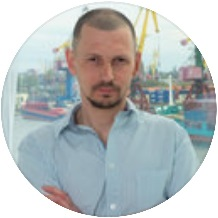Marine Litter and Sustainability of Ocean Ecosystems
A special issue of Journal of Marine Science and Engineering (ISSN 2077-1312). This special issue belongs to the section "Marine Ecology".
Deadline for manuscript submissions: closed (10 October 2023) | Viewed by 11845
Special Issue Editors
Interests: marine litter and microplastics; baltic sea; Russian arctic seas; beach litter monitoring; citizen science
Special Issues, Collections and Topics in MDPI journals
Interests: processing, analysis and visualization of GIS data; modeling of hydrological processes; marine litter; beach-cast and beach wrack; assessment of nutrient load on water systems
Special Issue Information
Dear Colleagues,
Along many beaches in the world, the beach swash zone is often occupied by a diverse typology of refuse materials, deposited by wind, waves, currents, and tidal forces. These materials are known as beach cast, and they comprise a combination of diverse types of refuse items generated from specific sources. Studies show that most of the anthropogenic litter floating in the ocean and washed ashore, even to remote archipelagoes of the Arctic, originates from mainland, and includes household wastes, various SUP items, and fishery-related products (fish boxes, etc.). Approximately half of the litter floating in the open ocean is ghost fishing gear, while numerous studies have shown the presence of microfibers in the water columns of all marine ecosystems. Recent international efforts on the marine litter issue include the Regional Action Plans, which have now been approved for areas of the ocean such as the Arctic, the Baltic Sea, and the Caribbean Sea. The RAPs focus on specific plastic and litter sources and pathways, and support the monitoring aspect of the growing issue of litter and microplastics. However, much more action is required in order to implement the suggested strategies.
This Special Issue invites papers that discuss sustainable solutions for ocean use in all economic sectors in relation to plastic pollution, including novel monitoring techniques, litter cleanup innovations, and guidelines to prevent the input of plastic litter into the ocean, both from land- and sea-based activities. This Special Issue will also welcome studies and regional initiatives including coastal population and citizen science activities, involving local and indigenous people who partake in marine litter monitoring and, thereby, contribute to the sustainable management of coastal ecosystems. High-quality papers, directly related to the various aspects mentioned above, are encouraged for publication. Novel techniques for the study are encouraged.
The themes covered include, but are not restricted to, the following:
- Sustainable solutions for marine litter management;
- Monitoring programs and guidelines for marine litter and microplastics;
- Marine litter in beach-cast zone;
- Prevention of litter input from land- and sea-based activities;
- Innovations and new approaches to litter management, cleanup technologies and approaches;
- Citizen science monitoring campaigns and initiatives.
Dr. Alexandra Ershova
Dr. Dmitry Domnin
Guest Editors
Manuscript Submission Information
Manuscripts should be submitted online at www.mdpi.com by registering and logging in to this website. Once you are registered, click here to go to the submission form. Manuscripts can be submitted until the deadline. All submissions that pass pre-check are peer-reviewed. Accepted papers will be published continuously in the journal (as soon as accepted) and will be listed together on the special issue website. Research articles, review articles as well as short communications are invited. For planned papers, a title and short abstract (about 100 words) can be sent to the Editorial Office for announcement on this website.
Submitted manuscripts should not have been published previously, nor be under consideration for publication elsewhere (except conference proceedings papers). All manuscripts are thoroughly refereed through a single-blind peer-review process. A guide for authors and other relevant information for submission of manuscripts is available on the Instructions for Authors page. Journal of Marine Science and Engineering is an international peer-reviewed open access monthly journal published by MDPI.
Please visit the Instructions for Authors page before submitting a manuscript. The Article Processing Charge (APC) for publication in this open access journal is 2600 CHF (Swiss Francs). Submitted papers should be well formatted and use good English. Authors may use MDPI's English editing service prior to publication or during author revisions.
Keywords
- marine litter
- microplastics
- beach cast
- sustainable solutions
- marine litter management
- monitoring programs and guidelines
- land- and sea-based sources of marine litter
- innovations and new technologies
- cleanups
- citizen science






